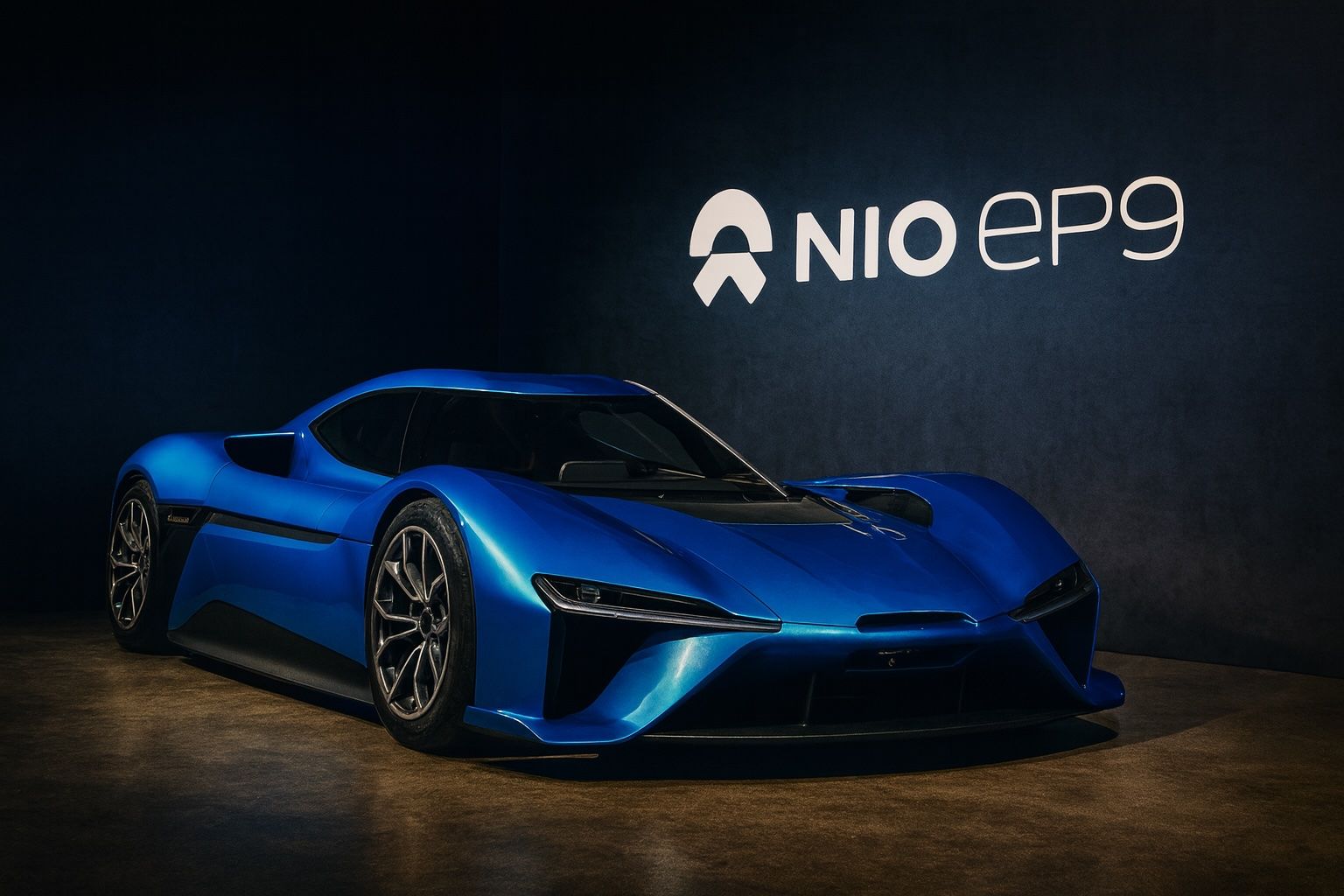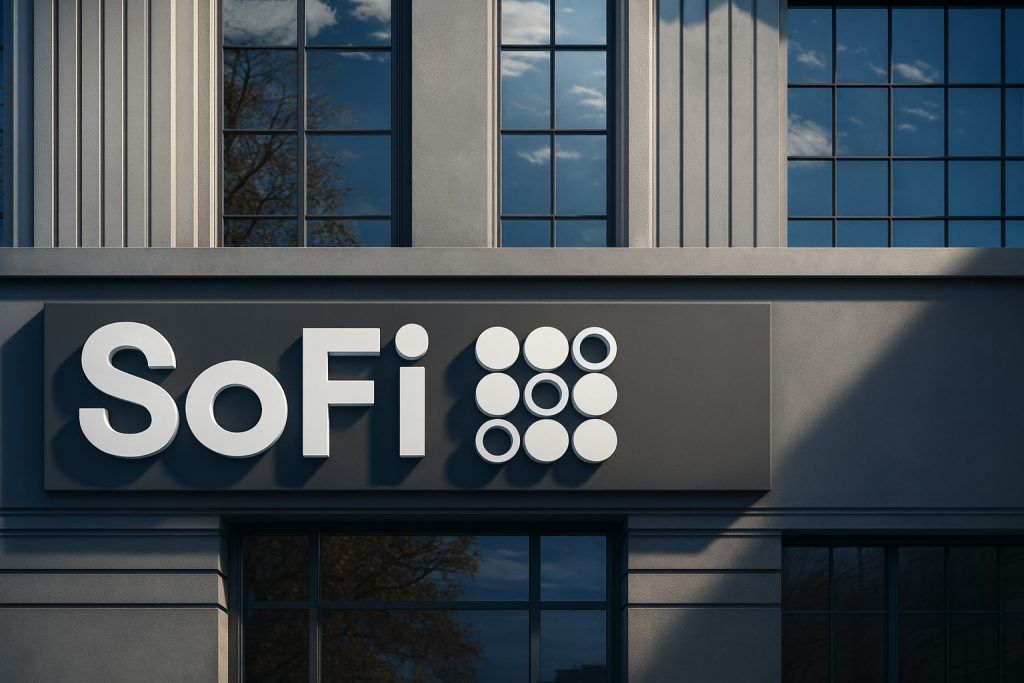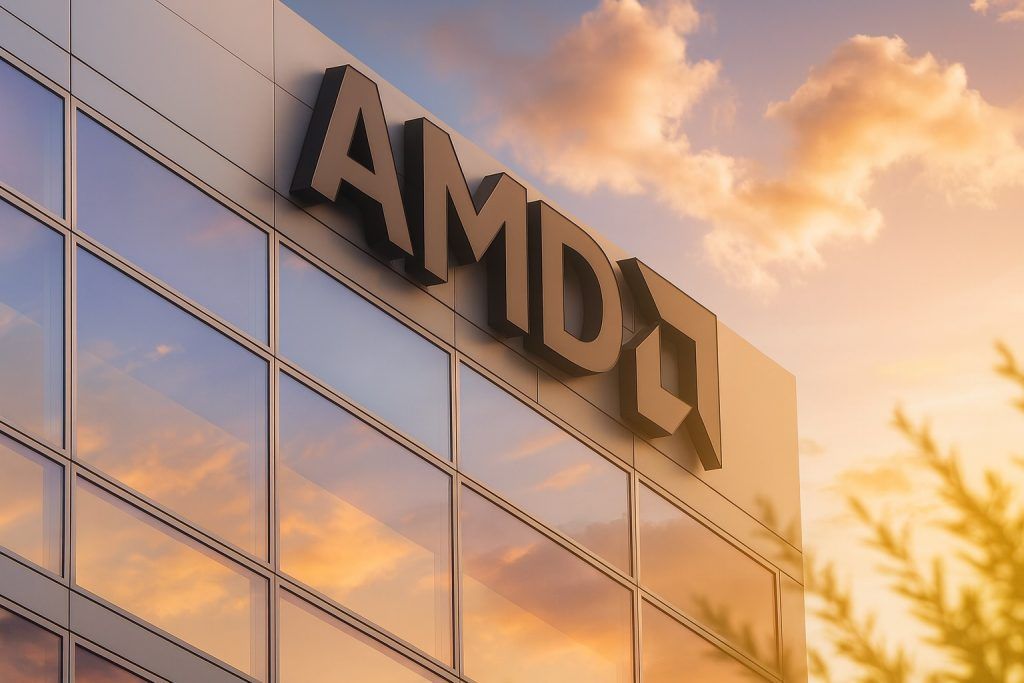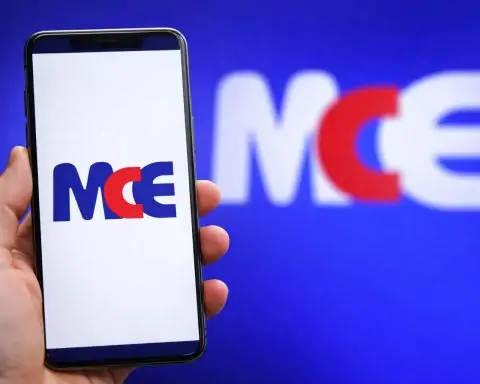- Record Sales Boost: NIO Inc. delivered a record 87,071 electric vehicles in Q3 2025 (up 40.8% year-on-year), including 34,749 units in September (+64% YoY) – a sales surge that lifted NIO’s stock to about $7.70 in early October [1].
- Lawsuit Triggers Plunge: On Oct. 16, Singapore’s GIC (sovereign wealth fund) sued NIO, alleging the EV maker inflated ~$600 million in revenue, echoing past short-seller claims. The news sent NIO’s shares down ~10% intraday, closing around $6.30 and wiping out recent gains [2].
- Stock Volatility: Despite the turbulence, NIO’s U.S.-listed stock traded around $6.5–$6.8 in mid-October, roughly 50% higher than at the start of 2025 [3]. As of Oct. 20, 2025, NIO stock hovered near $7.0 (about 12% below its 52-week high of $8.02) [4] [5].
- Bulls vs Bears: Optimistic analysts point to NIO’s expanding lineup (new Onvo and Firefly budget EV brands) and cost cuts, expecting a break-even quarter by Q4 2025 [6]. Skeptics note NIO’s ongoing losses and a long road to profitability (full-year profit not likely until 2029), with the GIC lawsuit and China’s EV price war adding near-term risks [7].
- Looking Ahead: NIO is betting big on Q4 2025, reportedly targeting ~150,000 deliveries that quarter (versus 87k in Q3) [8]. Executives aim for NIO’s first ever profitable quarter by year-end [9], making the upcoming Q3 earnings (mid-November) and holiday season pivotal for the stock’s outlook.
Market Reaction: A Volatile Climb and Sudden Shock
NIO’s stock has been on a rollercoaster in 2025. After starting the year near multi-year lows around $4–$5, the Chinese EV maker’s New York-listed shares surged over 40% in July 2025 amid optimism over new model launches and aggressive cost-cutting [10]. By early October, buoyed by record Q3 sales, NIO was trading in the mid-$7 range – near the top of its 52-week range (~$3.02–$8.02) [11] [12]. As of mid-October, the stock was up roughly 50% year-to-date [13], staging a strong comeback after a brutal 2022–2023 for Chinese EV stocks.
However, volatility remains high. On October 16, NIO’s rally screeched to a halt when news broke that Singapore’s GIC had lodged a U.S. securities lawsuit against the company. The stock plunged as much as 13–14% intraday, touching around $6.00 at one point [14] [15]. It closed down about 9% on the day around the $6.30 level [16] – a one-month low – erasing much of the month’s prior gains. This single-day drop wiped out an estimated $2.4 billion in market value [17] and marked NIO’s worst one-day performance since April.
The very next day, markets stabilized. On Oct. 17, NIO’s stock bounced back modestly as investors reassessed the lawsuit’s impact. In Singapore (where NIO has a secondary listing), shares opened higher and rebounded ~7% intraday before settling up 2.7% on Friday at about US$6.47 [18] [19]. Hong Kong–listed shares similarly regained ~6% after the plunge [20]. By Monday Oct. 20, the U.S.-listed stock was trading around $7 [21], suggesting that the initial shock had begun to fade as attention turned back to NIO’s fundamentals and upcoming catalysts.
Record EV Sales Lift Optimism
NIO’s flagship EP9 supercar (shown above) helped establish its high-tech image, but the company’s recent growth has come from more affordable new models.
Underlying the bullish sentiment on NIO is its surging sales momentum. In Q3 2025, NIO delivered 87,071 vehicles, a 40.8% jump from the same quarter a year ago [22]. September alone saw 34,749 deliveries (+64% YoY), NIO’s second consecutive monthly record [23]. This stellar performance was fueled by an expanded product lineup and pent-up demand: the company launched new brands and models in 2025 targeting both the premium and mass-market segments.
A major growth driver has been Onvo, NIO’s new family-oriented sub-brand aimed at mid-range SUV buyers. In September, Onvo accounted for nearly half of NIO’s sales (about 15,246 units) [24]. The Onvo L90 SUV, launched in August as a lower-priced 6-7 seat model, has racked up over 30,000 pre-orders, which Morgan Stanley analysts called “far above expectations” while reiterating an Overweight rating on NIO [25]. Onvo’s rapid rise was highlighted this month when the brand delivered its 100,000th vehicle in China, just months after its debut [26] – a milestone underscoring robust demand in the more affordable EV segment.
Meanwhile, NIO has kept refreshing its high-end lineup. In late September, the company unveiled an all-new version of its flagship ES8 SUV (a full-size electric SUV and NIO’s largest vehicle). The launch of the revamped ES8 – touted as the biggest battery-electric SUV in China – was met with enthusiasm: NIO’s share price jumped 12% in New York the day pre-orders opened [27]. Other models like the updated ES6/ES7 SUVs and ET5 sedan have contributed to steady sales growth as well. Thanks to these launches, NIO’s cumulative deliveries since inception hit approximately 872,000 vehicles by the end of September [28].
Investors initially cheered these trends. The return to high growth (after a slump in 2024) suggested NIO’s turnaround plan was gaining traction. The strong Q3 delivery figures helped push NIO’s stock to multi-month highs in early October, and analysts noted that vehicle sales growth – up 30%+ so far in 2025 – has finally returned [29]. Higher volume also drove a rebound in revenue (¥19.0 billion in Q2, +9% YoY) [30]. The big question was whether this operational momentum would translate into improved profitability… and then the lawsuit news hit, injecting new uncertainty.
Lawsuit Shock: GIC’s Fraud Claim Raises Risks
The GIC lawsuit has emerged as an unwelcome wildcard for NIO. In a complaint filed in U.S. federal court (unsealed in October), Singapore’s $690B sovereign fund GIC accuses NIO and two top executives – CEO William Li and former CFO Feng Wei – of “fraudulent recognition” of at least $600 million in revenue [31]. The suit alleges that NIO used a complex battery asset financing arrangement to overstate its sales in 2020–2021.
Specifically, NIO is accused of creating a joint venture called Weineng Battery Asset Co. in 2020, to which it sold EV batteries and its “battery-as-a-service” subscriptions. This allowed NIO to book upfront revenue from the battery sales, even though customers were paying monthly subscription fees [32]. According to GIC, this maneuver pulled forward roughly ¥4.1 billion (≈$600 million) of revenue that “wasn’t truly earned yet” [33]. The lawsuit claims NIO effectively controlled Weineng (calling it a de facto subsidiary) but did not disclose this, thereby misrepresenting its financials [34]. In GIC’s view, NIO’s stock price was “inflated artificially” by these accounting tactics, causing the fund to overpay when it bought 54.5 million NIO shares from 2020–2022 [35] [36]. GIC is now seeking damages for those losses.
NIO strongly denies any fraudulent behavior. The company notes that these allegations mirror a June 2022 short-seller report by Grizzly Research, which NIO publicly refuted [37]. In 2022, NIO’s board even commissioned an independent investigation, which “found no factual basis” for the claims of revenue inflation [38]. NIO maintains that its accounting was legitimate and that Weineng was an arms-length entity used to support its innovative battery subscription model. As for the new lawsuit, NIO has not commented in depth (the company said it would not respond to media queries about ongoing litigation [39]). Notably, a U.S. judge has temporarily stayed GIC’s case because a similar class-action lawsuit (stemming from the 2022 short-seller claims) is already underway [40]. This means the legal process could drag on for some time.
For investors, the overhang is clear: the GIC suit revives concerns about NIO’s corporate governance and transparency, just as the company was regaining market confidence. “Another blow to the Chinese carmaker struggling to maintain its footing,” as Bloomberg described the situation [41]. While the lawsuit by itself may not cripple NIO’s operations, it injects uncertainty. Analysts say the legal cloud could weigh on NIO’s stock in the near term [42], at least until the company clears its name or reaches a resolution. Even if no regulatory action ensues (the U.S. SEC looked into the issue in 2022 but did not charge NIO [43]), the headlines alone have dented sentiment. The episode is a reminder of the trust deficit for U.S.-listed Chinese firms, and NIO will need to work to reassure investors on its financial integrity. In the meantime, the company’s improving sales will be weighed against this new reputational risk.
Strategic Moves and Expansion Efforts
Even as it navigates market jitters, NIO has been executing on multiple strategic fronts in 2025 to bolster its growth and financial position. Raising capital has been a key theme. In September, NIO completed a US$1.2 billion share sale, its second equity offering of the year [44]. The company issued ~209 million new shares (161 million ADS at $5.57 each), and the raise was well-received – NIO’s stock price jumped ~6% on the news [45]. Management indicated the funds will go toward new vehicle platforms, expanding the charging and battery-swap station network, and R&D for next-gen technologies [46]. This cash infusion beefs up NIO’s balance sheet (the company had about ¥27.2 billion cash, ~$3.8B, on hand as of Q2 [47]). With NIO still running losses each quarter, a stronger cash buffer buys it time to execute its turnaround without worrying about immediate liquidity. (It also, however, dilutes existing shareholders – something bears point out, as NIO’s share count has risen with each fundraising [48].)
NIO has also pursued strategic partnerships to support its ambitious business model. In March 2025, NIO struck a notable alliance with Contemporary Amperex Technology Co. (CATL) – the world’s largest EV battery maker. CATL agreed to invest up to ¥2.5 billion (~$345 million) for a stake in NIO’s battery assets unit (the “NIO Power” subsidiary) [49]. The partnership will see CATL’s advanced “Choco-Swap” batteries integrated into NIO’s battery swapping network, including for NIO’s new Firefly mini-EV line [50]. This deal not only brings in extra capital, but also aligns NIO with a key supplier to share the burden of its capital-intensive battery subscription and swap infrastructure [51]. “NIO’s business model is very capital intensive,” one report noted, given the company operates over 3,400 swap stations worldwide and must keep thousands of spare battery packs on hand [52]. Partnering with CATL helps defray costs and validates NIO’s swap concept with industry support.
On the expansion front, NIO is increasingly looking beyond China’s borders. The automaker has already established a foothold in Europe (with sales and battery-swap stations in Norway, Germany, the Netherlands, and more) and is now eyeing new regions. In 2026, NIO plans to enter Southeast Asia, starting with Singapore, where it will partner with luxury auto dealer Wearnes Automotive for distribution [53]. A right-hand-drive version of its Firefly compact EV is being readied for that market [54]. NIO has also announced pilot programs in Central Asia and Latin America – for example, exploring opportunities in countries like Uzbekistan and Costa Rica [55]. These initiatives follow NIO’s methodical expansion strategy: test a market via local partners or small volumes, then scale up if reception is good. By mid-2025, NIO was operating in 10+ countries [56]. While its international sales are still nascent compared to China, building a global presence is part of NIO’s long-term plan to compete with Tesla and BYD on the world stage. Each new market brings brand visibility and potential revenue streams outside China’s hyper-competitive arena.
Another strategic push is technological self-reliance. In an effort to improve margins, NIO has been investing in vertical integration – notably developing its own advanced chips. On its latest earnings call, CEO William Li revealed NIO’s in-house autonomous driving chip (NX9031), claiming performance on par with top industry chips [57]. By designing key components like AI chips internally, NIO aims to lower its vehicle costs and reduce dependence on third-party suppliers. Management expects the NX9031 chip to cut costs per vehicle and boost future gross margins [58]. (NIO’s gross margin was ~10% in Q2 2025 [59] – an improvement from earlier in the year but still well below rivals like XPeng’s ~17% or Tesla’s margins.) In addition, NIO reportedly curbed some expenditures in 2025 – slowing the rollout of new swap stations to focus on optimizing usage of existing ones, and reining in marketing spend – as part of a company-wide belt-tightening. These moves reflect a new emphasis on efficiency over extravagance, a shift for a company once known for lavish customer lounges and generous perks. As NIO expands, maintaining financial discipline will be critical to reaching the profitability that has long eluded it.
Analyst Commentary: Split Opinions on NIO’s Trajectory
Wall Street analysts and investors are sharply divided on NIO’s prospects, and the stock’s wild ride this year highlights that contrast. Bulls argue that NIO’s growth story remains intact and even strengthened in recent months. They point to the breakout delivery numbers, successful new models, and management’s commitment to cut costs. For instance, Morgan Stanley has remained upbeat on NIO. In July, after news of massive pre-orders for the Onvo L90 SUV, the bank reiterated its Overweight rating, saying the strong demand confirmed NIO’s ability to tap new customer segments [60]. Morgan Stanley analysts projected that NIO’s cost-cutting and new vehicle launches could accelerate a turnaround by late 2025 [61]. Company leadership echoes this optimism: CEO William Li has publicly vowed to reach operating breakeven by Q4 2025, emphasizing to employees that hitting profitability will “dispel rumors” about NIO’s stability and silence its critics [62]. NIO’s management has repeatedly reaffirmed its confidence on this target [63], which, if achieved, would mark a major validation of the company’s strategy.
Some market experts also view NIO’s valuation as attractive for a high-growth EV player – if it can deliver on its goals. At roughly $7/share, NIO trades at only about 0.4× forward sales (less than half of expected 2026 revenue) [64]. This is a steep discount relative to peers – for example, Chinese rival XPeng trades around 1.2× forward sales [65], and Tesla, with its hefty profits, commands a much higher multiple. The low price-to-sales ratio signals that a lot of bad news (China’s price war, NIO’s losses, etc.) is already “priced in” [66]. As Reuters Breakingviews noted, it also reflects the reality that “annual net profit is still some way off” for NIO [67]. But it implies significant upside if NIO proves the doubters wrong. “Any positive surprise – e.g. a profitable quarter or faster sales growth – could spark a strong rally,” one Reuters analysis concluded [68]. In other words, with expectations relatively low, NIO’s stock might re-rate higher if the company can hit key milestones (like breakeven or 50%+ growth) in the coming quarters.
On the other side, bears and skeptics remain cautious, citing NIO’s financial track record and competitive challenges. “Until [NIO] regains momentum [and profitability], underperformance looks likely,” warned analysts at Jefferies in a recent note [69]. Their stance typifies the wary view: NIO has never posted an annual profit since its 2018 IPO [70], and its losses, while narrowing in some quarters, persist. In Q2 2025, NIO still recorded a net loss of ¥5.0 billion (~$700M) [71]. Even optimistic projections have NIO losing money on a full-year basis for a few more years. In fact, consensus estimates don’t foresee NIO achieving a full-year net profit until around 2029 [72]. This long road to profitability is a significant overhang. By contrast, competitor Li Auto is already profitable (earned ¥2.3B net in Q2) [73] [74] and XPeng aims to break even by late 2025 [75] [76], highlighting that NIO is behind the curve. Bears also highlight NIO’s need for external funding – the company issued stock twice this year – which dilutes shareholders and could continue if cash burn doesn’t subside [77]. The recent GIC lawsuit amplifies concerns about governance and accounting transparency [78], reminding investors of the 2022 short-seller saga. And China’s fiercely competitive EV market (with Tesla and BYD cutting prices) adds pressure that could make it harder for NIO to improve margins. In short, skeptics believe NIO has much to prove before its stock deserves a higher valuation.
Wall Street’s current consensus on NIO reflects these tempered expectations. Of about two dozen analysts covering the stock, roughly half rate it a Buy, while many others are in “hold/wait” mode [79]. The average 12-month price target is only in the high $7s (around NIO’s recent price) [80], indicating limited upside in the base case. Price targets range widely – some bullish analysts see NIO reaching $12+ if it executes well, while the most bearish sit in the mid-$5s [81]. Morningstar analyst Vincent Sun, for example, points out that NIO’s rapid sales growth and improving margins should support the share price near-term, lawsuit aside [82]. But he pegs NIO’s fair value at just $5.30 per ADS [83], implying the stock is overvalued above $6. Sun is concerned about NIO’s ability to sustain growth and narrow its losses; his models don’t expect NIO to turn profitable until 2027, a couple of years behind NIO’s own target [84]. This cautious outlook encapsulates the mood of many analysts: encouraged but unconvinced. As one commentator put it, NIO’s investors have adopted a “show me” stance [85] – they are waiting for concrete proof (like an actual profitable quarter, or continued 40-50% sales growth) before getting unequivocally bullish again.
Outlook: Crucial Quarter Ahead for NIO
Looking forward, the next few months are critical for NIO and its shareholders. The company’s leadership has effectively placed a bold bet on a blockbuster fourth quarter 2025. NIO is reportedly aiming to deliver around 150,000 vehicles in Q4 alone [86] – which would be a stunning ~72% jump from Q3’s deliveries and nearly half of its entire yearly volume. Internally, NIO has floated a full-year 2025 goal of roughly 440,000 deliveries (across NIO, Onvo, and Firefly brands) [87], about double the 2023 total. Hitting such aggressive targets will require smooth production ramp-ups and strong demand, especially for the new models. If NIO can pull it off, Q4 2025 could mark a turning point – potentially yielding the company’s first-ever quarter of positive operating profit [88]. “Profit or bust” is how some are framing it. Executives like CEO William Li have stressed to employees that achieving a Q4 profit is a goal that “must be achieved” to prove the company’s resilience [89]. A profitable quarter would not only validate NIO’s strategy, but also “dispel rumors” of instability and rebuild investor confidence [90]. It could trigger a re-rating of the stock, given how much skepticism is currently baked into the price.
However, any shortfall on these lofty ambitions could disappoint investors. If deliveries fall well below guidance or if NIO pushes back its profitability timeline again, the stock would likely react negatively given the high expectations management has set. All eyes are therefore on NIO’s upcoming Q3 2025 earnings report, expected in mid-November. That report and conference call will be a key checkpoint on NIO’s progress. Analysts anticipate strong revenue growth (thanks to the record Q3 sales), but more important will be margin trends and management’s tone on the outlook [91]. Investors will scrutinize NIO’s gross margin – can it rise into double digits consistently? – and whether operating costs are coming down toward targets. Notably, NIO previously stated it aims to cut its selling, general & admin (SG&A) expense from ~24% of revenue to under 10% [92] [93], which would dramatically improve the bottom line. Any update on that cost-cutting progress will be pivotal. Guidance for Q4 will also be a focal point: if NIO provides an official Q4 delivery forecast or hints at expected profitability, it could significantly sway market sentiment [94]. Conversely, if management stays mum or sounds cautious (perhaps due to the lawsuit or macroeconomy), it may dampen hopes.
The broader environment in China’s EV industry is another factor that will influence NIO’s path. On one hand, the Chinese government continues to be supportive of EV adoption. Beijing recently extended EV purchase incentives and tax breaks through 2027, which is a tailwind for EV demand across the board [95]. This policy clarity should help NIO and peers plan for growth knowing subsidies won’t vanish in the near-term. On the other hand, officials have also cracked down on the EV price war – authorities urged automakers to avoid “irrational” pricing and excessive discounts that were eroding margins industry-wide [96] [97]. If this directive holds, it could bring more pricing discipline to the market. NIO, which generally resisted slashing prices too steeply (preferring to hold its premium brand image), might benefit if competitors can’t keep undercutting on price [98]. A more rational pricing environment could ease margin pressure on all players. That said, economic headwinds in China remain a concern. If China’s overall auto sales slow due to a shaky economy or consumer sentiment, even continued EV subsidies might not fully offset the weakness. NIO, selling higher-priced premium EVs, would be vulnerable if consumers grow more cautious on big purchases [99]. The company’s push into exports provides a bit of diversification – growing sales in Europe and new markets could buffer any China softness [100] – but NIO’s fortunes are still heavily tied to its home market in the near term.
All told, NIO enters late 2025 at a crossroads. The company has undeniably made strides: sales are at record highs, new models are expanding its addressable market, and strategic partners are providing cash and tech support. These positives have driven a recovery in the stock from its lows and sparked optimism that the “NIO story” is getting back on track. Yet, challenges abound – from the GIC legal overhang, to fierce competition and the ever-present question of “when will you turn a profit?” [101]. The next few quarters will likely determine which narrative prevails. If NIO can deliver on its ambitious promises – posting strong results in Q4, maybe even that first glimmer of profit – it could finally shake off the skeptics and re-rate as a top-tier EV contender. In that bullish scenario, analysts note the stock has substantial upside (some project it could double if profitability comes into view) [102]. However, execution is key. Any stumble in meeting targets, or further blows to investor trust, and NIO’s stock could remain stuck in a holding pattern or worse. As of now, the company’s fate seems balanced between high potential and significant risk. The coming earnings report and holiday sales season will be crucial tests of whether NIO can turn its recent momentum into a sustainable comeback. Global EV investors and tech stock watchers alike will be closely following this Chinese EV pioneer’s journey into 2026, as NIO tries to prove that its wild ride will ultimately head uphill.
sources: [103] [104] [105] [106] [107] [108] [109] [110] [111] [112] [113] [114] [115] [116] [117] [118] [119] [120] [121] [122] [123] [124] [125] [126] [127] [128] [129] [130] [131] [132] [133] [134] [135] [136] [137] [138] [139] [140] [141] [142] [143] [144] [145] [146] [147] [148] [149] [150] [151] [152] [153] [154] [155]
References
1. ts2.tech, 2. ts2.tech, 3. ts2.tech, 4. www.indmoney.com, 5. www.indmoney.com, 6. ts2.tech, 7. ts2.tech, 8. ts2.tech, 9. ts2.tech, 10. ts2.tech, 11. ts2.tech, 12. www.indmoney.com, 13. ts2.tech, 14. www.businesstimes.com.sg, 15. www.businesstimes.com.sg, 16. ts2.tech, 17. ts2.tech, 18. www.businesstimes.com.sg, 19. www.businesstimes.com.sg, 20. www.businesstimes.com.sg, 21. www.indmoney.com, 22. ts2.tech, 23. ts2.tech, 24. ts2.tech, 25. ts2.tech, 26. eletric-vehicles.com, 27. ts2.tech, 28. ts2.tech, 29. ts2.tech, 30. ts2.tech, 31. ts2.tech, 32. ts2.tech, 33. ts2.tech, 34. ts2.tech, 35. www.businesstimes.com.sg, 36. www.businesstimes.com.sg, 37. ts2.tech, 38. www.reuters.com, 39. ts2.tech, 40. ts2.tech, 41. ts2.tech, 42. ts2.tech, 43. ts2.tech, 44. ts2.tech, 45. ts2.tech, 46. ts2.tech, 47. ts2.tech, 48. ts2.tech, 49. ts2.tech, 50. ts2.tech, 51. ts2.tech, 52. ts2.tech, 53. ts2.tech, 54. ts2.tech, 55. ts2.tech, 56. ts2.tech, 57. ts2.tech, 58. ts2.tech, 59. ts2.tech, 60. ts2.tech, 61. ts2.tech, 62. ts2.tech, 63. ts2.tech, 64. ts2.tech, 65. ts2.tech, 66. ts2.tech, 67. ts2.tech, 68. ts2.tech, 69. ts2.tech, 70. ts2.tech, 71. ts2.tech, 72. ts2.tech, 73. ts2.tech, 74. ts2.tech, 75. ts2.tech, 76. ts2.tech, 77. ts2.tech, 78. ts2.tech, 79. 247wallst.com, 80. ts2.tech, 81. ts2.tech, 82. www.businesstimes.com.sg, 83. www.businesstimes.com.sg, 84. www.businesstimes.com.sg, 85. ts2.tech, 86. ts2.tech, 87. eletric-vehicles.com, 88. ts2.tech, 89. ts2.tech, 90. ts2.tech, 91. ts2.tech, 92. ts2.tech, 93. ts2.tech, 94. ts2.tech, 95. ts2.tech, 96. ts2.tech, 97. ts2.tech, 98. ts2.tech, 99. ts2.tech, 100. ts2.tech, 101. ts2.tech, 102. ts2.tech, 103. ts2.tech, 104. ts2.tech, 105. www.indmoney.com, 106. ts2.tech, 107. ts2.tech, 108. ts2.tech, 109. ts2.tech, 110. ts2.tech, 111. www.businesstimes.com.sg, 112. ts2.tech, 113. ts2.tech, 114. www.businesstimes.com.sg, 115. www.indmoney.com, 116. ts2.tech, 117. eletric-vehicles.com, 118. ts2.tech, 119. ts2.tech, 120. ts2.tech, 121. ts2.tech, 122. www.businesstimes.com.sg, 123. www.reuters.com, 124. ts2.tech, 125. ts2.tech, 126. ts2.tech, 127. ts2.tech, 128. ts2.tech, 129. ts2.tech, 130. ts2.tech, 131. ts2.tech, 132. ts2.tech, 133. ts2.tech, 134. ts2.tech, 135. ts2.tech, 136. ts2.tech, 137. ts2.tech, 138. ts2.tech, 139. ts2.tech, 140. ts2.tech, 141. ts2.tech, 142. ts2.tech, 143. www.businesstimes.com.sg, 144. www.businesstimes.com.sg, 145. www.businesstimes.com.sg, 146. ts2.tech, 147. eletric-vehicles.com, 148. ts2.tech, 149. ts2.tech, 150. ts2.tech, 151. ts2.tech, 152. ts2.tech, 153. ts2.tech, 154. ts2.tech, 155. ts2.tech










